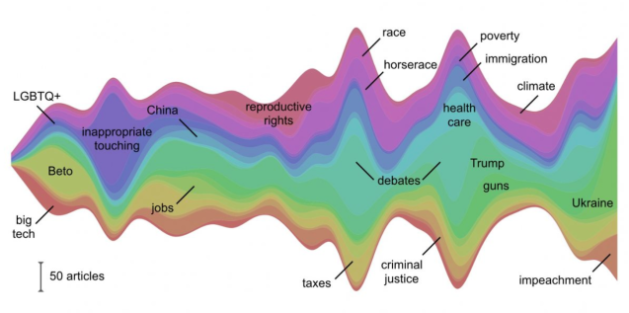 By Jeff Howe
By Jeff Howe
Earlier this year Northeastern University’s School of Journalism received a Knight Foundation grant to launch a Media Innovation graduate program. Students — mostly mid-career journalists and the occasional newly minted J-school grad — would pursue one story over the 18-month course of study. We’d let the story discover its own media, so to speak, rather than, say, imposing an interactive treatment on a piece that wants to be a photo essay. Then we would crack open the considerable resources of Northeastern University to our students. Javascript, data-scraping, digital videography — each student writes her or his own ticket, like a Knight Fellowship with a degree at the end.
In the final semester we would work assiduously to place the story with a well-respected media outlet. Poker isn’t poker without money, and journalism isn’t journalism without readers. Since we mostly acquire the craft in a newsroom, we figured we’d bring the newsroom into the university. So far, and to our great pleasure, reality has followed the blueprint.
In the spirit of marrying education to editorial, this week we launched a partnership with Esquire magazine. The goal is to create both a physical and virtual research and development lab for digital storytelling. Online platforms have recently delivered a cornucopia of long-form journalism, but we’re still in the messy — a.k.a. totally awesome — phase of experimentation. Most of the current experimentation will fade away without a trace. But some of it will stick.
Esquire and Media Innovation decided to approach the subject from three directions:
- StoryLab, a full-semester course taught at Northeastern’s School of Journalism beginning in spring 2015, in which students will work with Esquire writers and editors to reimagine both classic and new Esquire stories for the digital age.
- Storybench.org, a news site that offers an “under the hood” look at the latest and most inventive examples of digital creativity — from data-visualization projects to interactive documentaries — as well as the tools and innovation behind them.
- StoryChallenge, an annual new-media storytelling competition, launching in October 2015, which will challenge journalists to reinvent the way magazine stories are told.
These projects serve a few highly pragmatic purposes. As one of the nation’s most prestigious venues for literary journalism, Esquire has a great interest in the future of that form. As educators, we’re doing our best to prepare journalism students to enter a workforce that expects creativity and a collaborative imagination as much as shoe leather reporting.
Recently we had Jay Lauf — the founding president and publisher of the business news site Quartz — speak to our students. Like Vice and BuzzFeed, Quartz is growing fast and hiring accordingly. I’m so accustomed to journalism’s famine mentality I assumed they were getting inundated with talented candidates.
That’s not the case. “We are getting swamped with résumés,” Jay says, “but not always with qualified candidates.” Jay defines these as journalists who may have a base-level fluency in programming but, more important, they can demonstrate an easy facility with numbers and data and social media. In fact, the various digital journalism ventures in New York, Jay says, are battling it out for the few journalists that fit the new mold.
There’s another mission threading throughout these efforts: How do you train journalists for jobs that don’t exist yet? One way, we figured, was to try to invent those jobs here. We’re not going to do that by stroking our chins in Aristotelian reflection. We’re going to do it by doing it. There have to be readers at the end of the process, and real sources and real stories. Poker ain’t poker if you’re not using real money. Journalism ain’t journalism unless the stakes are real. And that’s what these Esquire partnerships bring to the table.
Jeff Howe is an assistant professor of journalism at Northeastern University. This post was previously published at the Knight Blog.






